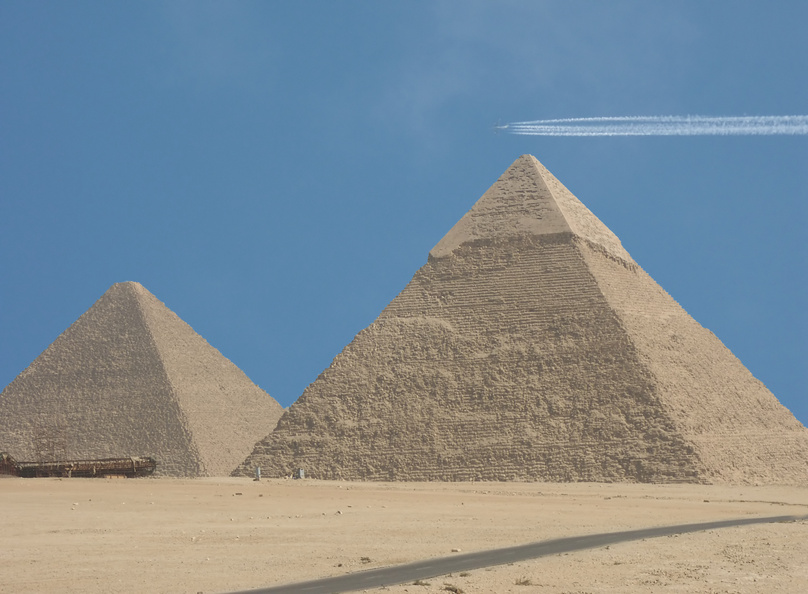Proof of Afterlife By Geometry
Abstract
Proof of Afterlife by Geometry discusses the concept of the afterlife through the lens of geometry. It uses thought experiments to explain the inverse relationship. Then it slices a pyramid with a plane and moves the plane toward the apex to show the inverse relationship between memory and awareness. Finally, it concludes by showing how the pyramid thought experiment proves afterlife.
1. Geometry: The Math that Proves Afterlife
The pursuit of understanding afterlife has long eluded mathematical proof, remaining shrouded in mystery. However, this theory proposes that the principles of geometry - rooted in the fundamental elements of point, line, plane, and space - can offer a pathway to unveiling the afterlife's essence. Drawing parallels to three-dimensional computer modeling, where entire environments exist as geometric formulas stored in memory, the theory suggests that geometry may hold the key to bridging the gap between life and the afterlife. Through thought experiments grounded in these geometric basics, the theory invites a new perspective on how the afterlife can be understood as a dimension within the framework of space and time.
2. Using Three-Dimensional Software to Help Visualize Geometry
The use of three-dimensional software and virtual reality demonstrates how geometry provides a foundation for creating immersive environments that closely mimic reality. In such systems, geometric elements like points, planes, and space are visualized with precision and efficiency. A point, as the intersection of three planes, exists solely as a position with no dimensions, while a plane has length and width but no thickness. Space, defined by its infinite dimensions, forms the environment's framework. Incorporating the fourth dimension - time - introduces the concept of the time-space continuum, where geometry exists dynamically over time. Together, these elements - point, line, plane, space, and time - create a logical framework for exploring profound ideas, such as proving the afterlife through a mathematical equation grounded in geometric principles. This integration of geometry and time offers a novel perspective on understanding existence and its potential transcendence.
3. Exploring Geometric Inverses: A Conceptual Understanding
The balance beam serves as a tangible illustration of the concept of inverse relationships, emphasizing how opposing actions maintain equilibrium. When weights are evenly distributed on either side of the fulcrum, the system is balanced. However, moving one box farther from the center causes the beam to tilt, necessitating an adjustment - such as reducing the size of the box - to restore balance. This visual and physical process parallels mathematical inverses, where operations counteract each other to achieve stability. The balance beam thus provides a simple yet powerful way to grasp the essence of inverses, highlighting their role in maintaining harmony across physical and mathematical systems.
4. Demonstrating the Inverse Behavior of Boxes
The demonstration of inverse behavior using two boxes in a balanced system highlights the concept of inverse proportionality, a principle where changes in one quantity are counteracted by proportional changes in another to maintain a constant relationship. Starting with two equal-sized boxes, adjustments are made by increasing the size of one box while decreasing the other. Each change, calculated as proportional increases or decreases (e.g., by 20%), ensures that the product of their sizes always equals one. This consistent balance illustrates how inverse relationships maintain equilibrium, even as individual components change. This foundational concept not only reveals the inherent beauty of mathematics but also sets the stage for its application in exploring afterlife in subsequent sections.
5. Afterlife Proven Mathematically Using a Pyramid
The pyramid analogy demonstrates the mathematical interplay between conscious awareness and memory, symbolized by two inversely proportional boxes. Starting with a perfect pyramid, a slicing plane is gradually moved toward its apex, reducing the inner box on the slice to a single, infinitely small point while the outer box expands infinitely to encompass the environment. The inner box, representing conscious awareness, becomes a singular, dimensionless position at the apex, while the outer box, symbolizing memory, grows boundlessly in size. This elegant balance underscores the inverse relationship between awareness and memory: as one becomes infinitely small, the other becomes infinitely large. The system remains in equilibrium, illustrating how consciousness and memory are mathematically and conceptually interconnected, forming a framework for understanding their role in afterlife.
6. Conclusion: How the Memory/Awareness Pyramid Proves Afterlife
The "Memory/Awareness Pyramid" theory posits a dual nature of the human mind, comprising awareness and memory as inversely related dimensions. During life, awareness is a singular, confined point focused on the present, while memory functions in the background, absorbing and preserving every moment and detail in unlimited time and space. At the moment of death, awareness transitions from a finite point to the infinite expanse of memory, encompassing all space and time. This transition forms the foundation for afterlife, conceptualized as the infinite realization of accumulated memory. The theory suggests that out-of-body experiences (OBEs), in which consciousness exists outside the physical body, offer glimpses of this memory-based realm, reinforcing the idea that the mind is space. In this view, afterlife isn't a continuation of life but a dimensional transformation of awareness into the boundless expanse of memory.
